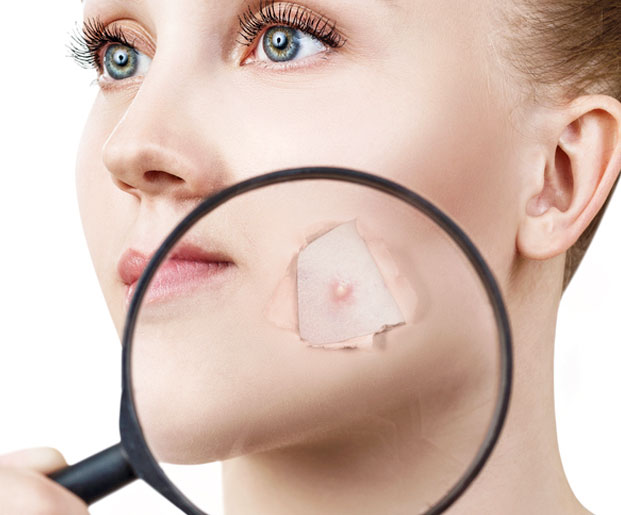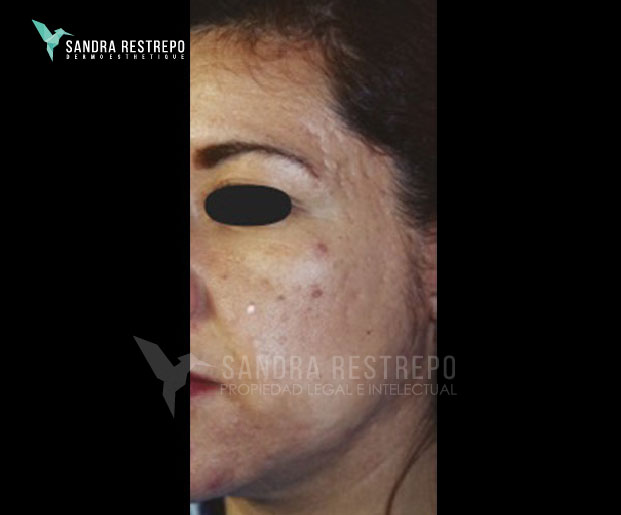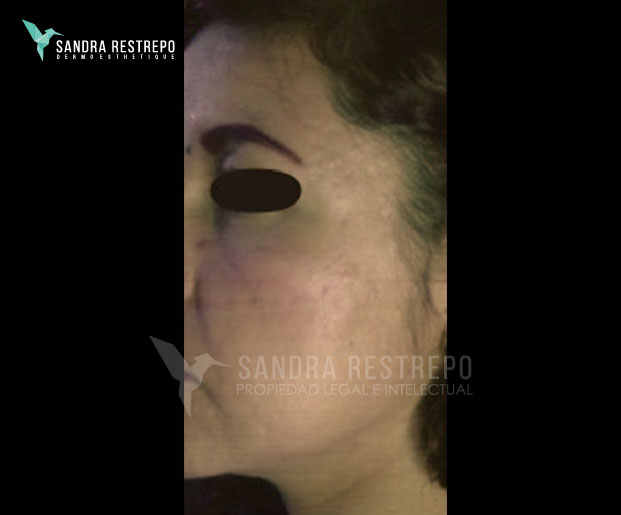Acne Scars Treatment
- Home
- Acne Scars Treatment
Acne scars greatly affect the self-esteem, happiness and normal life of patients who have them. Dermocosmetic surgery and aesthetic dermatology currently offers several treatment options to achieve the best possible results in the management of this condition.
Acne scars are formed as a result of an abnormal healing process during acne, due to damage to the pilosebaceous follicle caused by the exaggerated inflammation of each acne lesion.
The body’s natural response to acne is the production of cells fighting to counteract this antigen with a controlled inflammatory response; however, sometimes the inflammation that occurs is inadequate due to uncontrolled activity of macrophages; these are cells that can cause tissue damage producing various types of acne scars.
Acne scars can be in many forms. Some of them have tissue loss and thinning of some layers of the skin. Among these are the ice peak scars, the rolling and rectangular ones. They differ in size, diameter, shape, depth and location they take in the different layers of the skin. Other scars have an abnormal increase in collagen tissue, such as hypertrophic scars and keloids.
There are several classifications of acne scars that analyze all the factors that must be taken into account to offer the patient the best treatment options for each individual type of scar.
There are many treatments for acne scars such as superficial, medium and deep chemical peels, dermabrasion, electric micropuncture with Nanopore Stylus®, cryotherapy, scar subsicions, skin grafts, micro-grafts, dermal implants and different filling substances, photodynamic therapy, CO2 laser, Erbium Yag laser, Neodimium Yag laser and Diode, intralesional injections with different actives for scars remodeling and many other treatments that should be analyzed for each patient´s particular case.




